Francisco de Goya y Lucientes Biography
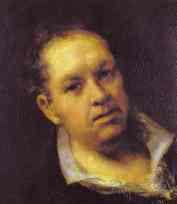
Goya was born in a very poor village called Fuendetodos, near Saragossa, in Aragon, on 30 March 1746. Goya’s father was a gilder in Saragossa and it was there that Goya spent his childhood and adolescence. He began his artistic studies at the age of 13 with a local artist, José Lusán, who had trained in Naples and who taught Goya to draw, to copy engravings and to paint in oils. In 1763 and 1766, he competed unsuccessfully for a scholarship of the Royal Academy of San Fernando in Madrid, probably working in the studio of the Court Painter Francisco Bayeu, who was also from Saragossa. To continue his studies he went to Rome at his own expense. In April of 1771 he participated in a competition held by the Academy of Parma introducing himself as a pupil of Francisco Bayeu. By the end of 1771, Goya was back in Saragossa, where he received his first official commission, the frescoes in the Cathedral of El Pilar.
In 1773 Goya married Josefa Bayeu, sister of Francisco Bayeu. In 1774, the German artist Anton Raphael Mengs summoned Goya to Madrid to paint cartoons for tapestries for the Royal Factory of Santa Barbara. It is possible that Goya first met Mengs in Rome, since many years later he wrote that it was Mengs who made him return to Spain. In any event, it was Mengs who started him on his career at court. Under the direction first of Mengs, and later of Francisco Bayeu and Mariano Maella, Goya executed over 60 tapestry cartoons between 1775 and 1792, see e.g. Fight at the Cock Inn, The Parasol, La Cometa.
In 1780, Goya was elected a member of the Royal Academy of San Fernando. In 1780-81, he worked on the frescoes of El Pilar in Saragossa. On his return to Madrid he received the royal invitation to paint one of seven large altarpieces for the newly built church of San Francisco el Grande. The King’s opinion of his work must have been favorable, because in 1785, a year after the paintings were first shown to the public, Goya was appointed Deputy Director of Painting in the Academy. In 1786, he became a court painter.
Among Goya’s early admirers and most important patrons during a period of 20 years were the Duke and Duchess of Osuna, who commissioned not only portraits of themselves and a family group but also a number of paintings to decorate their country residence near Madrid, the Alameda Palace, known as El Capricho. Among other paintings for the Duke of Osuna are two altarpieces, commissioned in 1788 for the chapel of his ancestors, St. Francis Borgia, in Valencia Cathedral.
In 1783-85, Goya painted a number of portraits of the influential persons of his time: the portrait of the Chief Minister of State, the Count of Floridablanca, in which Goya himself appears; the family portrait of the Infante Don Luis, the King’s brother, with himself again in the picture; the court architect, Ventura Rodriguez. In 1785, he was commissioned for a series of portraits of offices of the Banco Nacional de San Carlos. In these early official portraits, Goya adopted conventional XVIII century poses. His portrait of Charles III in Hunting Costume is based directly on Velasquez’s paintings of royal huntsmen.
The death of Charles III in 1788, and the outbreak of the French Revolution, brought to an end the period of comparative prosperity and enlightenment in Spain during which Goya had reached maturity. Under the rule of the weak Charles IV and his unscrupulous Queen, María Luisa, Spain fell into political and social corruption, which ended with the Napoleonic invasion of Spain. Under the new regime Goya reached the height of his career as the most fashionable and successful artist in Spain. The new King raised him to the rank of Court Painter in 1789.
During a visit to Andalusia towards the end of 1792, Goya was struck down by a long and serious illness of which the effect, as he wrote even a year later, made him, ‘At times rage with so ill a humor that he could not tolerate himself’. The nature of the illness is not known for certain but it caused temporary paralysis and partial blindness and left him permanently deaf, so that henceforth he could only communicate by writing and sign language. He returned to Madrid in the summer of 1793.
After the death of Francisco Bayeu in 1795, Goya succeeded his former teacher as Director of Painting in the Academy (but resigned for reasons of health two years later), and in 1799 was appointed First Court Painter. In 1799, Goya published the series of 80 etchings called Los Caprichos, bitter caricatures of life. Despite the veiled language of Los Caprichos they were withdrawn from sale after a few days.
From the time of their ascension until 1800, Charles IV and María Luisa sat for him on many occasions, and many replicas were made of his portraits of them. He painted them in various costumes and poses, ranging from the early decorative portraits in full regalia in the tradition of Mengs to the simpler and more natural compositions in the manner of Velázquez.
Goya was 62 years old when the Napoleonic invasion of Spain started in 1808, and Spain was subjected to six years of war and revolution. Goya was in Madrid during the tragic events of 2 and 3 May 1808 when the population rose against the French and the uprising was savagely repressed. He later, in 1814, recorded the events in two of the most famous of his paintings The Second of May, 1808: The Charge of Mamelukes. and The Third of May, 1808: The Execution of the Defenders of Madrid. Meanwhile, with thousands of other heads of families, Goya swore allegiance to the French King, Joseph Bonaparte. During the war he was occupied with portraits of family groups and private citizens. At the time he made his personal record of the war in expressive and fearful drawings Desastres de la Guerra, which were later used for a series of 82 etchings, which were published only in 1863.
In August 1812, when the British entered Madrid, Goya accepted a commission for an equestrian portrait of the Duke of Wellington and, soon afterwards, painted one other portrait of his only recorded English sitter. On the restoration of Ferdinand VII in 1814, Goya resumed his office as First Court Painter. The portraits of Ferdinand were Goya’s last royal portraits, he went out of favor and fashion. From now on Goya was chiefly occupied with paintings for private patrons, for friends and for himself. He continued to record his observations and ideas in drawings. During this period Goya received two important ecclesiastical commissions for St. Justa and St. Rufina, painted in 1817 for the Seville Cathedral, and for The Last Communion of St. Joseph of Calasanz, painted in 1819 for the church of the Escuelas Pías de San Antón in Madrid.
As a result of the revolution of 1820 Ferdinand VII was forced to recognize a constitution, but already in 1823 the French army restored the Spanish king to absolute power, and the persecution of the liberals was renewed with greater violence than ever before. Goya, who had made his last appearance at the Academy on 4 April 1820 to swear allegiance to the Constitution, went into hiding early in 1824. After the declaration of amnesty Goya left Spain. Except for two short visits to Madrid in 1826 and 1827, the painter remained in France, mainly in Bordeaux, for the rest of his life. He died in Bordeaux on 16 April, 1828.
Bibliography
Goya by I. Levina. Moscow-Leningrad. 1958.
Goya. by T. Sedova. Moscow. 1973.
Goya and Romanticism. by V. Prokofyev. Moscow. 1986.
Painting of Europe. XIII-XX centuries. Encyclopedic Dictionary. Moscow. Iskusstvo. 1999.
Francisco Goya y Lucientes: 1746-1828 by Janis Tomlinson. Phaidon Press Inc., 1999.
Goya: Man Among Kings by Anthony H. Hull. Madison Books, 1993.
Goya by ROBERT HUGHES. Knopf, 2003.
The Black Paintings of Goya by Juan Jose Junquera. Scala Publishers, 2003.
I, Goya by Dagmar Feghelm, Goya, Ishbel Flett, Christopher Wynne. Prestel Publishing, 2004.
Goya by Fred Licht. Abbeville Press, 2001.
Goya by Werner Hofmann, Francisco Goya. Thames & Hudson, 2003.
Goya: Drawings from His Private Albums by Juliet Wilson Bareau, Juliet Wilson-Bareau, Francisco Goya. Lund Humphries Publishers, 2001.
Goya: The Complete Etchings and Lithographs by Alfonso E. Perez Sanchez, Julian Gallego, Jenifer Wakelyn. Prestel, 1995.
Goya's Caprichos: Aesthetics, Perception, and the Body by Andrew Schulz. Cambridge University Press, 2005.
- Portrait Of Francisco Bayeu.
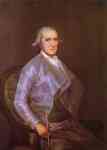
c.1795. Oil on canvas. Museo del Prado, Madrid, Spain. Read Note.
- Fight At The Cock Inn.

1777. Oil on canvas, 41.9 x 67.3 cm. Private collection.
- The Parasol.
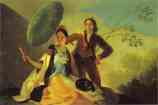
1777. Oil on canvas, 104 x 152 cm. Museo del Prado, Madrid, Spain.
- La Cometa (The Kite).
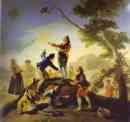
1778. Tapestry cartoon. 269 x 285 cm. Museo del Prado, Madrid, Spain.
- Charles Iii In Hunting Costume.

c.1786-88. Oil on canvas, 206 x 130 cm. Duchess of Arco, Madrid, Spain. Read Note.
- The Second Of May, 1808 At The Puerta Del Sol.
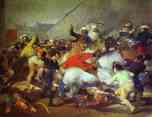
1814. Oil on canvas. 266 x 345 cm. Museo del Prado, Madrid, Spain. Read Note.
- The Third Of May, 1808: The Execution Of The Defenders Of Madrid.
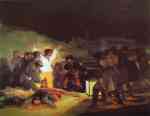
1814. Oil on canvas, 266 x 345 cm. Museo del Prado, Madrid, Spain. Read Note.
- Portrait Of The Duke Of Wellington.
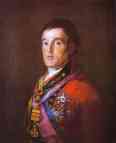
1812. Oil on panel, 64 x 52 cm. National Gallery, London, UK. Read Note.